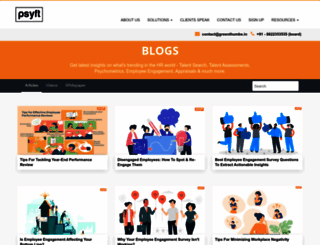Get the latest insights on the Human Resources arena
Page Load Speed
2 sec in total
First Response
680 ms
Resources Loaded
1.1 sec
Page Rendered
144 ms

About Website
Click here to check amazing Blog Psyft content. Otherwise, check out these important facts you probably never knew about blog.psyft.com
Get the latest on HR trends - Talent Search, Personality tests for hiring, Employee Engagement, 360 Degree Appraisal and much more.
Visit blog.psyft.comKey Findings
We analyzed Blog.psyft.com page load time and found that the first response time was 680 ms and then it took 1.3 sec to load all DOM resources and completely render a web page. This is quite a good result, as only 25% of websites can load faster.